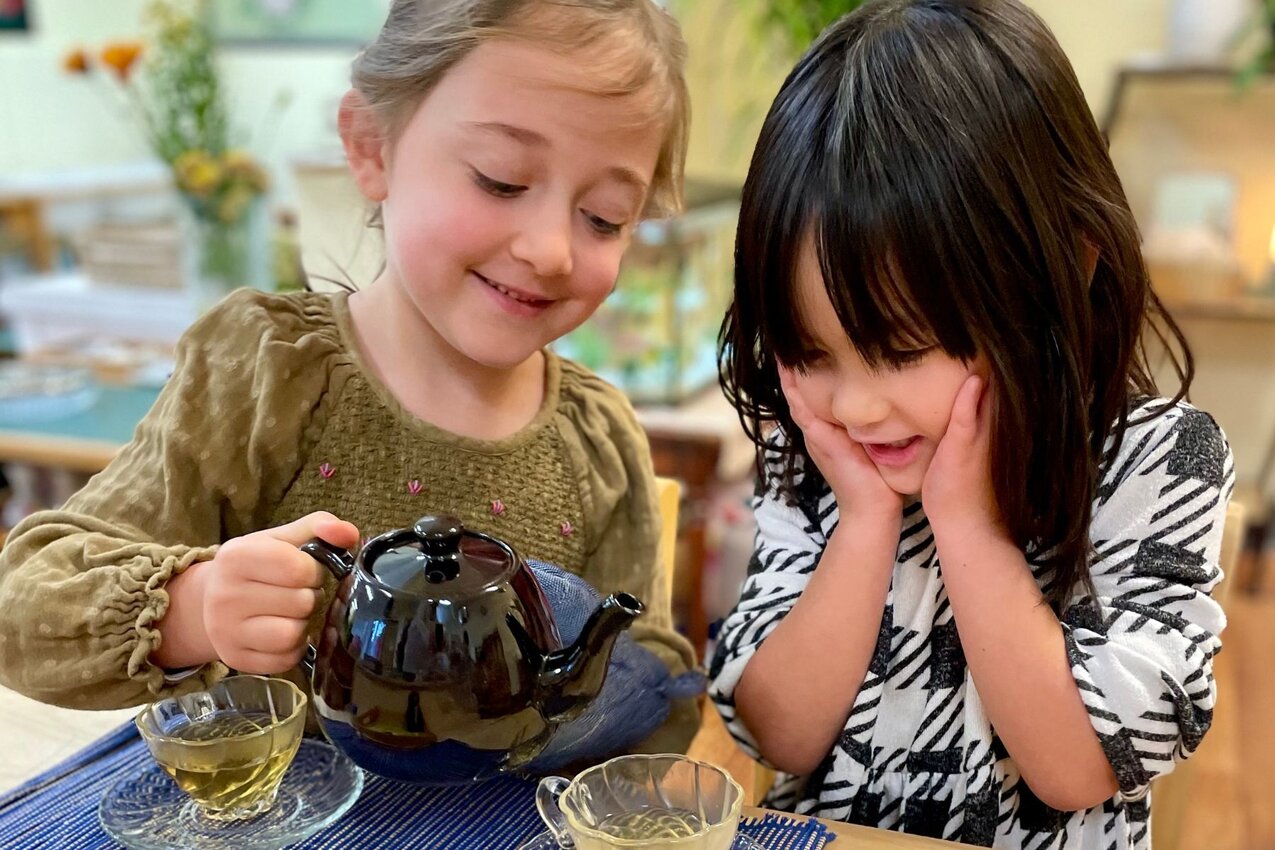
Social Development in the Children’s House
— Maria Montessori, The Absorbent Mind“There is among children an evident sense of community. This rests on the noblest feelings and creates unity in the group.”
There is a natural inclination within each child to help and interact with others. The prepared Montessori environment strengthens this drive, fostering social development and thus creating unity among each child in the Children’s House. The Montessori environment and method have various structures in place that support children's social development. A notable structure of the Montessori method is its use of mixed-age groups. The mixed age groups of the Children's House (2.6 to 6 years of age) provide a natural environment for the children to learn and care for one another. The older children are role models and leaders for the younger children and can offer the help and support that only another child can provide. This instills a culture of helping among the children. When the youngest children grow and take the place of the older ones, they proudly and excitedly offer their expertise to other children and even adults in the Children’s House.
The Montessori environment also emphasizes having only as many adults in the room as necessary. We comply with all licensing and state requirements; however, the method focuses on having only one trained adult who provides the children with lessons and one assistant whose job is to aid the children from the background, enhancing the children's sense of community. By having fewer adults in the room, the children learn to rely on one another more, developing a strong sense of independence and interdependence within the community.
A unique way the Montessori method helps develop children's social skills is with Grace and Courtesy lessons. Grace and Courtesy lessons give children the guidelines for social interactions within the Children’s House. These lessons are provided in small groups and always approached with a sense of wonder for how our society and culture work. The children and the adults act out and practice whatever Grace and Courtesy concept they are being shown. There are many different types of Grace and Courtesy lessons, some of which extend beyond the Montessori environment. Some Grace and Courtesy lessons the children receive include how to wait in a line, how to say please and thank you when being served, how to kindly ask for help, how to walk around someone's work, and how to ask another child to play. These Grace and Courtesy lessons are just a few of the limitless possibilities. Grace and Courtesy lessons enable the children to practice and act out how the world works in a safe and judgment-free environment. This allows the child to feel confident in the ways they can interact with others in the environment and lets them know the expectations for how others should be interacting with them as well.
The Montessori environment and method, with its focus on mixed-age groups, minimal adult intervention, and Grace and Courtesy lessons, provide a nurturing space for children to develop essential social skills and a sense of community. By fostering independence, interdependence, and empathy, the Montessori approach equips children with the foundation to thrive in their interactions with others and navigate the complexities of social relationships within the Children's House and beyond. This holistic approach to social development aligns with Maria Montessori's vision of creating unity and noble feelings within the community of children.
Written by Lyrik Lopez, Red Cedar Children’s House Guide
